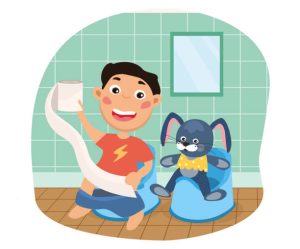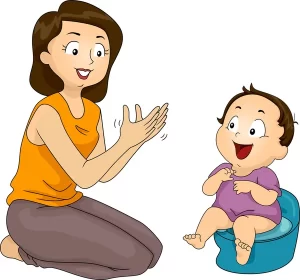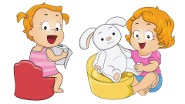Childworks Occupational Therapy – Toilet Blog Series – Tips and tricks for successful toileting!
Here’s our last instalment of Rimjhim’s Toileting Blog Series. This Blog is an overview of what has been covered in the series to-date, with a few tips and tricks to make things easier for you all. If you’d like to read the previous blogs, click below:
Childworks Occupational Therapy – Toilet Blog Series – Part 3
Childworks Occupational Therapy – Toilet Blog Series – Part 2
Childworks Occupational Therapy – Toilet Blog Series – Part 1
Tips and tricks for successful toileting
- Health: If you read the last blog you’ll know that a healthy diet with enough fibre and water intake is essential for everyone, particularly your children. Keeping them healthy can help ease some of the discomfort of toileting.
- Learning: ACCIDENTS HAPPEN! Accidents are normal, every child has them. Help your child to understand that this is completely normal, by getting them to go to the bathroom or bedroom with you to change their underwear / clothes. Remind them that it’s ok to have an accident, but it’s important to change afterwards.
- Comfort: Ensure your child is comfortable and have their feet flat on the floor or you may put a stool under their feet. You can also use a toilet seat insert so that the child doesn’t fall into the toilet. See our second blog for more about this!
- Dressing: Dress your child in clothes that are easy to get in and out of in a hurry – usually, these are looser t-shirts and skirts/shorts with elastic rather than buttons, zippers or press-studs. Unlike adults, children need to go straight away, not a few minutes later!
- Relax: Both the parent and child need to be relaxed. Some options to help with this are listed below or you can make up your own methods:
- Breathing – by blowing a pinwheel, bubbles or completing deep breathing exercises – breathe in for a count of 5 and out for a count
of 5 (this is most likely useful with older children).
- Some children can be overwhelmed by the harsh lights and chemical smells or odours associated with a bathroom. Perhaps use a softer light or maybe a scented diffuser to disguise the odours? Or some stickers on a wall that they can look at? Something to make it more pleasant for everyone.
- Shutting the lid when you flush can reduce the noise if a child is bothered by sound.
- Using a toy or reading a story.
- Visuals: Using pictures can help a child learn all the processes involved in using the toilet, from sitting to flushing and washing hands at the end.
- Play: Use play with dolls or other toys can help reinforce toilet routines. You can buy dolls that sit on potties and mimic toileting actions. This can help your child to understand the processes involved in a way they relate to.
- Routine: Children need to learn the signals their body is giving them when they are toilet training. It takes time to understand the urges that mean you need to go to the toilet. Routine can help them learn the body’s natural cues. Take them to the toilet when they wake or just before bedtime, just like you would do.

Use a toy to create a relaxing environment

Promote a healthy enviromment

Make it fun!

Recent Comments